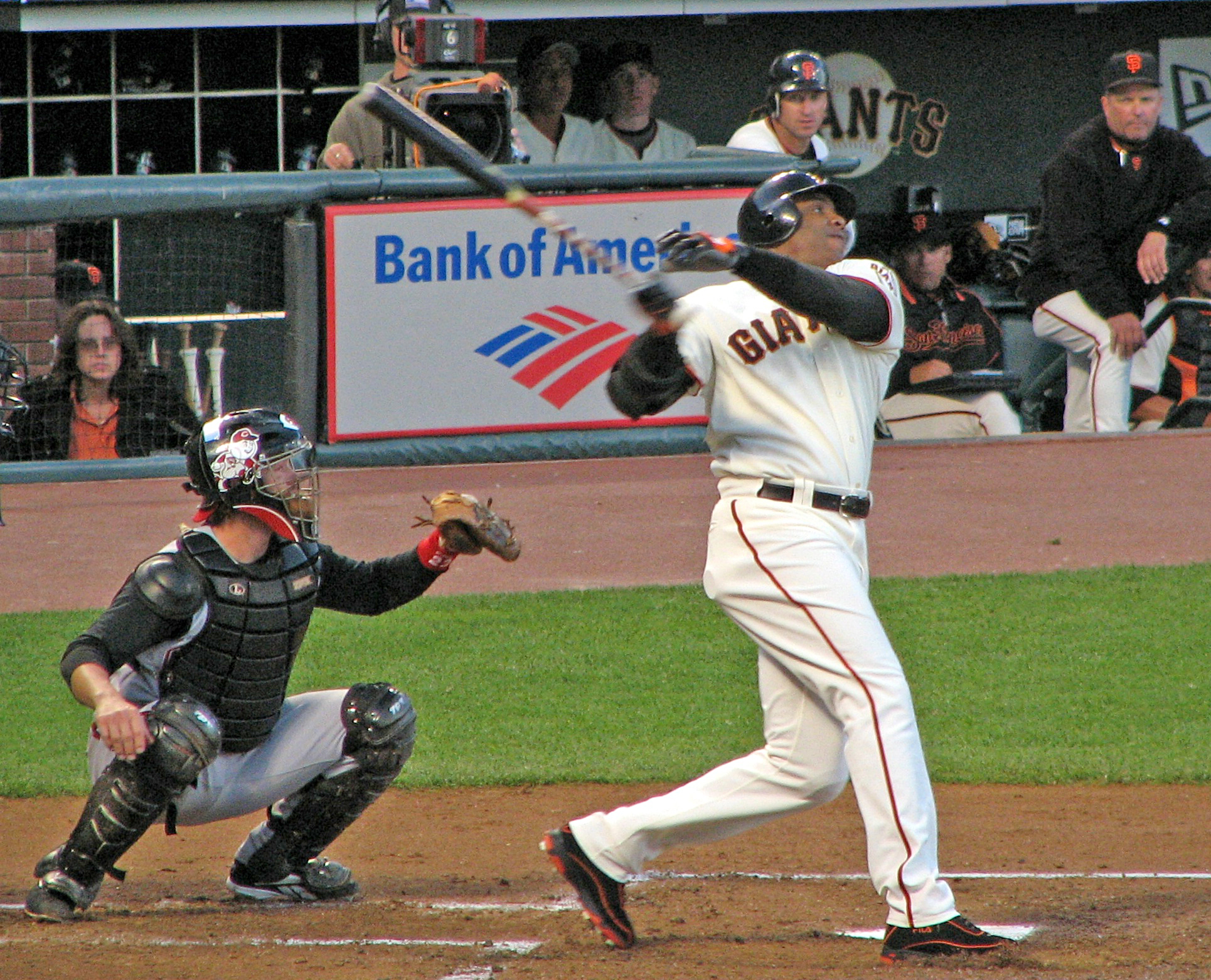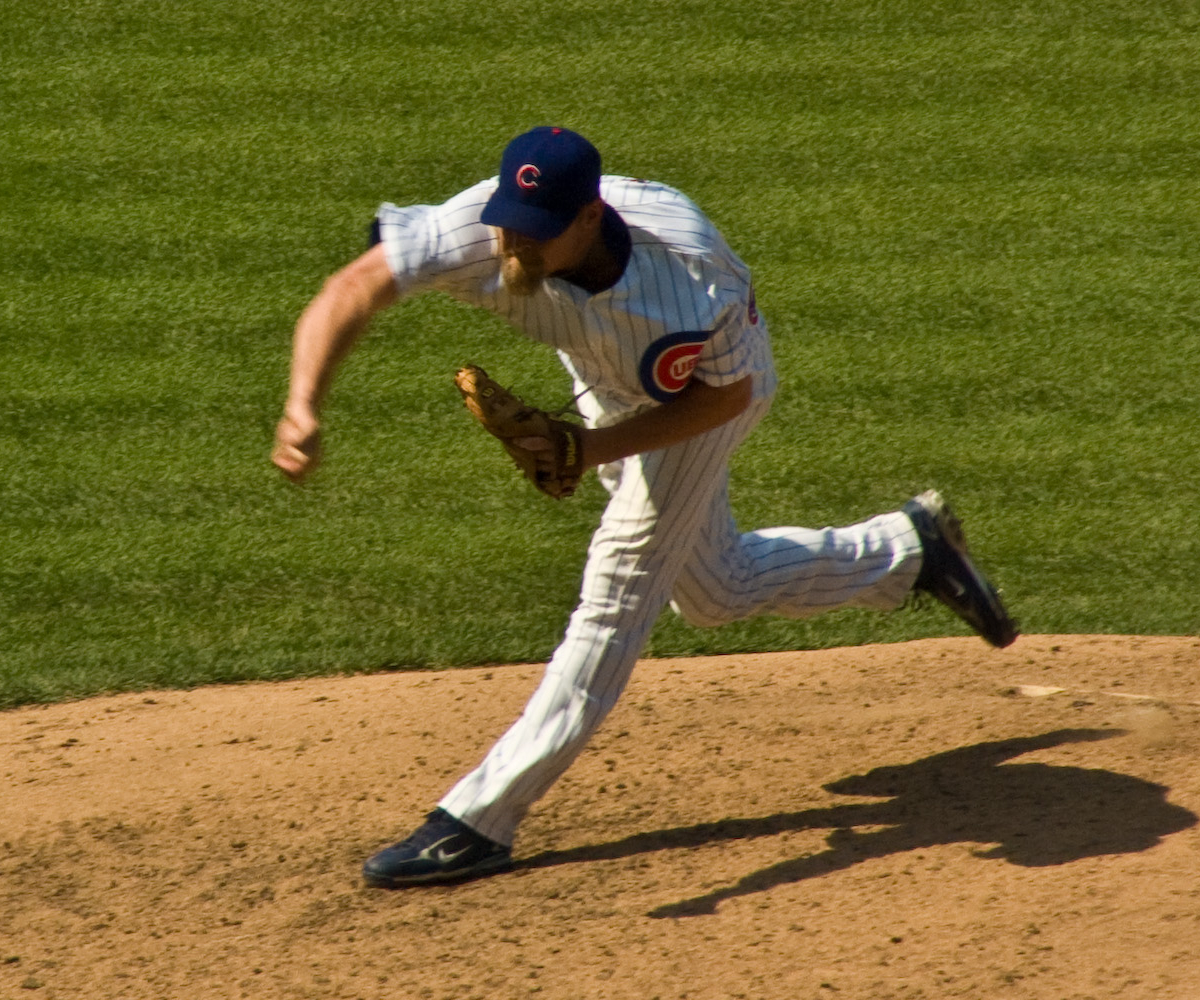|
Pete Donohue
Peter Joseph Donohue (November 5, 1900 – February 23, 1988) was an American right-handed starting pitcher with a 12-year career from 1921 to 1932. He played for the Cincinnati Reds, New York Giants, both of the National League, and the Cleveland Indians and Boston Red Sox of the American League. His interment was located at Fort Worth's Greenwood Memorial Park along with Tom Baker and Jackie Tavener. During a start on June 12, 1928, Donohue pitched innings and allowed 11 earned runs on 14 hits. However, thanks in part to his own home run, he was credited with the win. , his game score of 1 is the lowest for a winning pitcher since the earned run became an official statistic in 1913. Donohue was a very good hitting pitcher in his major league career, posting a .246 batting average (180-for-732) with 44 runs, 6 home runs, 87 RBI and drawing 21 bases on balls. Highlights *Led National League in wins (1926, with 20 wins) See also *List of Major League Baseball annual wins ... [...More Info...] [...Related Items...] OR: [Wikipedia] [Google] [Baidu] |
Pitcher
In baseball, the pitcher is the player who throws ("Pitch (baseball), pitches") the Baseball (ball), baseball from the pitcher's mound toward the catcher to begin each play, with the goal of out (baseball), retiring a batter (baseball), batter, who attempts to either make contact with the pitched ball or draw a base on balls, walk. In the numbering system used to record defensive plays, the pitcher is assigned the number 1. The pitcher is often considered the most important player on the defensive side of the game, and as such is situated at the right end of the defensive spectrum. There are many different types of pitchers, such as the starting pitcher, relief pitcher, middle reliever, left-handed specialist, lefty specialist, setup man, and the closing pitcher, closer. Traditionally, the pitcher also bats. Starting in 1973 with the American League and spreading to further leagues throughout the 1980s and 1990s, the hitting duties of the pitcher have generally been given over t ... [...More Info...] [...Related Items...] OR: [Wikipedia] [Google] [Baidu] |
Jackie Tavener
John Adam "Jackie" Tavener (December 27, 1897 – September 14, 1969), nicknamed "Rabbit", was an American professional baseball player from 1921 to 1934. He played all or parts of six seasons in Major League Baseball as a shortstop for the Detroit Tigers (1921, 1925–1928) and Cleveland Indians (1929). Tavener was known as one of the smallest men ever to play in the major leagues and was rejected for that reason by Detroit manager Ty Cobb after a two-game tryout in 1921. When he rejoined the Tigers in 1925, Tavener became one of the American League's best defensive shortstops, ranking among the league leaders every year from 1925 to 1928 in putouts, assists, double plays and fielding percentage. Despite a career batting average of .255, Tavener could hit with power and was among the league leaders in triples in 1925, 1926 and 1928. He is also one of only four players in major league history (Baseball Hall of Fame inductees Ty Cobb, Honus Wagner and Max Carey are the others) t ... [...More Info...] [...Related Items...] OR: [Wikipedia] [Google] [Baidu] |
1900 Births
As of March 1 ( O.S. February 17), when the Julian calendar acknowledged a leap day and the Gregorian calendar did not, the Julian calendar fell one day further behind, bringing the difference to 13 days until February 28 ( O.S. February 15), 2100. Summary Political and military The year 1900 was the end of the 19th century and the beginning of the 20th century. Two days into the new year, the U.S. Secretary of State John Hay announced the Open Door Policy regarding China, advocating for equal access for all nations to the Chinese market. The Galveston hurricane would become the deadliest natural disaster in United States history, killing between 6,000 and 12,000 people, mostly in and near Galveston, Texas, as well as leaving 10,000 people homeless, destroying 7,000 buildings of all kinds in Galveston. As of 2025, it remains the fourth deadliest Atlantic hurricane on record. An ongoing Boxer Rebellion in China escalates with multiple attacks by the Boxers on Chines ... [...More Info...] [...Related Items...] OR: [Wikipedia] [Google] [Baidu] |
Bases On Balls
A base on balls (BB), better known as a walk, occurs in baseball when a batter receives four pitches during a plate appearance that the umpire calls '' balls'', and is in turn awarded first base without the possibility of being called out. The base on balls is defined in Section 2.00 of baseball's Official Rules, and further detail is given in 6.08(a). Despite being known as a "walk", it is considered a faux pas for a professional player to actually walk to first base; the batter-runner and any advancing runners normally jog on such a play. The term "base on balls" distinguishes a walk from the other manners in which a batter can be awarded first base without liability to be put out (e.g., hit by pitch (HBP), catcher's interference). Though a base on balls, catcher's interference, or a batter hit by a pitched ball all result in the batter (and possibly runners on base) being awarded a base, the term "walk" usually refers only to a base on balls, and not the other methods of re ... [...More Info...] [...Related Items...] OR: [Wikipedia] [Google] [Baidu] |
Run Batted In
A run batted in or runs batted in (RBI) is a statistic in baseball and softball that credits a batter for making a play that allows a run to be scored (except in certain situations such as when an error is made on the play). For example, if the batter bats a base hit which allows a teammate on a higher base to reach home and so score a run, then the batter gets credited with an RBI. Before the 1920 Major League Baseball season, runs batted in were not an official baseball statistic. Nevertheless, the RBI statistic was tabulated—unofficially—from 1907 through 1919 by baseball writer Ernie Lanigan, according to the Society for American Baseball Research. Common nicknames for an RBI include "ribby" (or "ribbie"), "rib", and "ribeye". The plural of "RBI" is a matter of "(very) minor controversy" for baseball fans:; it is usually "RBIs", in accordance with the usual practice for pluralizing initialisms in English; however, some sources use "RBI" as the plural, on the basis ... [...More Info...] [...Related Items...] OR: [Wikipedia] [Google] [Baidu] |
Home Runs
In baseball, a home run (abbreviated HR) is scored when the ball is hit in such a way that the batter is able to circle the bases and reach home plate safely in one play without any errors being committed by the defensive team. A home run is usually achieved by hitting the ball over the outfield fence between the foul poles (or hitting either foul pole) without the ball touching the field. Inside-the-park home runs where the batter reaches home safely while the baseball is in play on the field are infrequent. In very rare cases, a fielder attempting to catch a ball in flight may misplay it and knock it over the outfield fence, resulting in a home run. An official scorer will credit the batter with a hit, a run scored, and a run batted in (RBI), as well as an RBI for each runner on base. The pitcher is recorded as having given up a hit and a run, with additional runs charged for each base-runner that scores. Home runs are among the most popular aspects of baseball ... [...More Info...] [...Related Items...] OR: [Wikipedia] [Google] [Baidu] |
Run (baseball)
In baseball, a run is scored when a player advances around first, second and third base and returns safely to home plate, touching the bases in that order, before three outs are recorded and all obligations to reach base safely on batted balls are met or assured. A player may score by hitting a home run or by any combination of plays that puts him safely "on base" (that is, on first, second, or third) as a runner and subsequently brings him home. Once a player has scored a run, they may not attempt to score another run until their next turn to bat. The object of the game is for a team to score more runs than its opponent. The Official Baseball Rules hold that if the third out of an inning is a force out of a runner advancing to any base then, even if another baserunner crosses home plate before that force out is made, his run does not count. However, if the third out is not a force out, but a tag out, then if that other baserunner crosses home plate before that tag out i ... [...More Info...] [...Related Items...] OR: [Wikipedia] [Google] [Baidu] |
Batting Average (baseball)
In baseball, batting average (BA) is determined by dividing a player's hits by their total at-bats. It is usually rounded to three decimal places and read without the decimal: A player with a batting average of .300 is said to be "batting three hundred". If necessary to break ties, batting averages could be taken beyond the .001 measurement. In this context, .001 is considered a "point", such that a .235 batter is five points higher than a .230 batter. History Henry Chadwick, an English statistician raised on cricket, was an influential figure in the early history of baseball. He is credited with creating the modern box score, in 1859, and the practice of denoting a strikeout with a "K". Chadwick wrote in 1869: "In making up a score at the close of the match the record should be as follows:–Name of player, total number of times the first base was made by clean hits, total bases so made, left on bases after clean hits, and the number of times the first base has been made on ... [...More Info...] [...Related Items...] OR: [Wikipedia] [Google] [Baidu] |
Game Score
Game score is a metric devised by Bill James as a rough overall gauge of a starting pitcher's performance in a baseball game. It is designed such that scores tend to range from 0–100, with an average performance being around 50 points. Formula To determine a starting pitcher's game score: *Start with 50 points. *Add one point for each out (baseball), out recorded, so three points for every complete inning pitched. *Add two points for each inning completed after the fourth. *Add one point for each strikeout. *Subtract two points for each hit (baseball), hit allowed. *Subtract four points for each earned run allowed. *Subtract two points for each unearned run allowed. *Subtract one point for each base on balls, walk. History James first introduced game score in the edition of his ''Baseball Abstract''. He called it "a kind of garbage stat that I present not because it helps us understand anything in particular but because it is fun to play around with." Other versions Jam ... [...More Info...] [...Related Items...] OR: [Wikipedia] [Google] [Baidu] |
Sports Reference
Sports Reference, LLC is an American sports statistics company that operates databases of several sports. They include Pro Football Reference for American football, Baseball Reference for baseball, Basketball Reference for basketball, Hockey Reference for ice hockey, FBref for association football (soccer), and pages for college football and basketball. Sports Reference also operate the online sports trivia game Immaculate Grid and the statistics-based subscription service Stathead. From 2008 to 2020 the website included Olympic Games statistics from the first Games to the most recent. History The company was founded in Philadelphia by Sean Forman in 2004 and incorporated as Sports Reference LLC in 2007. The company operates databases of sports statistics for several sports. They include Pro Football Reference for American football, Baseball Reference for baseball, Basketball Reference for basketball, Hockey Reference for ice hockey, FBref for association football (soccer) ... [...More Info...] [...Related Items...] OR: [Wikipedia] [Google] [Baidu] |
Baseball-Reference
Baseball Reference is a baseball statistics database maintained by Sports Reference. The site provides career statistics for Major League Baseball (MLB) players and teams as well as records, MLB draft history, and sabermetrics. History Founder Sean Forman began developing the website while working on his Ph.D. dissertation in applied math and computational science at the University of Iowa. While writing his dissertation, he had also been writing articles on and blogging about sabermetrics. Forman's database was originally built from the '' Total Baseball'' series of baseball encyclopedias. The website went online in April 2000, after first being launched in February 2000 as part of the website for the ''Big Bad Baseball Annual''. It was originally built as a web interface to the Lahman Baseball Database, though it now employs a variety of data sources. In 2004, Forman founded Sports Reference. Sports Reference is a website that came out of the Baseball Reference website. ... [...More Info...] [...Related Items...] OR: [Wikipedia] [Google] [Baidu] |
Win (baseball)
Win or WIN most likely refers to: * A victory Win, Winning, WIN or Winner may also refer to: Arts and entertainment Film * '' Win!'', a 2016 American film Literature * ''Win'' (Coben novel), 2021 * WIN (pacifist magazine) * WIN (wrestling magazine), US Music * Win (band), a Scottish band * "Win" (song), by Jay Rock * "Win", a song by Ateez from the album '' Treasure EP.Fin: All to Action'' * "Win", a song by Brian McKnight from the album ''Gold'' * "Win", a song by David Bowie from the album '' Young Americans'' * "Win", a song by Stefflon Don and DJ Khaled from the mixtape '' Secure'' * Worldwide Independent Network (WIN), a coalition of independent music bodies, see Independent record label#Worldwide Independent Network (WIN)) Television and radio * Win Radio, a Philippine radio network ** 91.5 Win Radio, its flagship station * Win FM, an Indian radio station * WIN Television, an Australian television network ** WIN Corporation, the owner of WIN Television ** WIN N ... [...More Info...] [...Related Items...] OR: [Wikipedia] [Google] [Baidu] |




